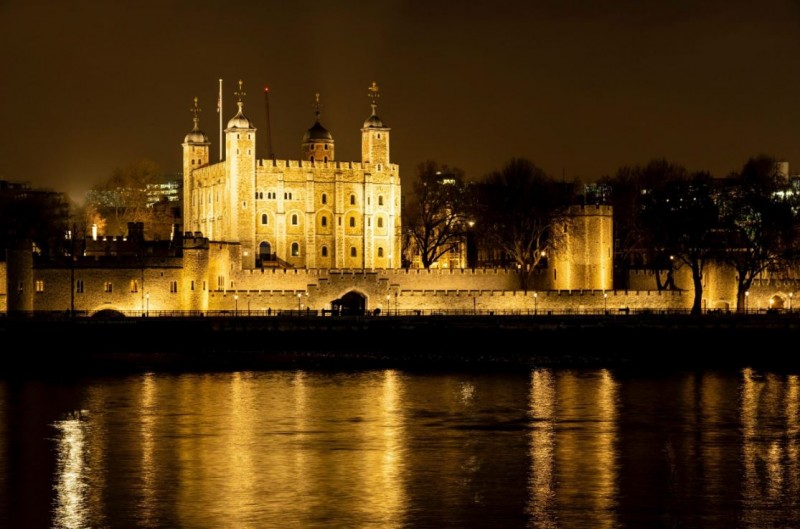
1. Introduction: Unveiling England's Iconic Landmark
The Tower of London, with its imposing medieval architecture, stands tall on the banks of the River Thames in London. It is one of England's most famous landmarks, steeped in a dark and intriguing history that has captivated visitors for centuries. In this article, we will delve into the shadowy past of the Tower, exploring the eerie tales and notorious events that have shaped its reputation.
2. A Glimpse into the Tower's Origins
The Tower of London was founded by William the Conqueror in the 11th century. Originally constructed as a symbol of Norman power, the Tower served various purposes throughout history, from a royal residence to a treasury and even a zoo. Its iconic White Tower, a central keep, is the oldest part of the fortress.
3. The Tower's Role as a Royal Residence
Over the centuries, the Tower of London served as a royal residence for monarchs. It witnessed lavish banquets, ceremonies, and the opulent lifestyles of kings and queens. However, beneath the grandeur, the Tower also harbored a dark side.
4. The Tower as a Prison: Infamous Inhabitants
4.1 The Princes in the Tower
One of the most haunting mysteries associated with the Tower is the disappearance of the young princes, Edward V and Richard of Shrewsbury, in 1483. The boys were lodged in the Tower but vanished without a trace, fueling rumors of foul play and cementing the Tower's reputation as a place of intrigue and tragedy.
4.2 Anne Boleyn and the Tudor Executions
During the reign of Henry VIII, the Tower gained notoriety as a place of execution. Queen Anne Boleyn, the second wife of Henry VIII, was famously beheaded within the Tower walls in 1536. Numerous other Tudor figures met their demise here, including Catherine Howard, Lady Jane Grey, and Thomas Cromwell.
4.3 The Ghostly Residents: The White Lady and the Princes' Ghosts
Legends of ghostly apparitions have haunted the Tower for centuries. The White Lady, believed to be the spirit of Arbella Stuart, has been spotted wandering the corridors, her presence invoking a sense of sorrow and tragedy. Additionally, some claim to have witnessed the ghosts of the young princes, forever trapped within the Tower's confines.
5. Torture and Executions within the Tower Walls
The Tower of London was also infamous for its gruesome torture methods employed to extract confessions from prisoners. The rack, the Scavenger's Daughter, and the dreaded Iron Maiden were just a few of the instruments of torment used within these walls. Executions were often conducted publicly, serving as a macabre form of entertainment for the masses.
6. The Tower and the Crown Jewels: Tales of Intrigue
The Tower of London is the custodian of the Crown Jewels, a priceless collection of regalia and ceremonial objects. The Crown Jewels have been safeguarded within the Tower's walls for centuries, surviving theft attempts and political turmoil. The stories surrounding the jewels, their symbolism, and the elaborate coronation ceremonies continue to fascinate visitors.
7. Hauntings and Supernatural Phenomena
7.1 The Ghost of Sir Walter Raleigh
Sir Walter Raleigh, an English explorer and favorite of Queen Elizabeth I, was imprisoned in the Tower for treason. Legend has it that his spirit still wanders the Bloody Tower, forever searching for a way to freedom.
7.2 The Haunting of Lady Jane Grey
Lady Jane Grey, the "Nine Days' Queen," met her tragic fate within the Tower. Some claim her spirit lingers, haunting the Tower and the Chapel Royal.
7.3 The Headless Apparitions: Anne Boleyn and Lady Margaret Pole
Anne Boleyn and Lady Margaret Pole, both victims of the executioner's axe, are said to manifest as headless apparitions within the Tower grounds, a haunting reminder of their tragic ends.
8. The Tower Today: A Symbol of British Heritage
Today, the Tower of London stands as a UNESCO World Heritage Site and welcomes millions of visitors each year. It serves as a testament to British history, housing a captivating museum that showcases its dark past. The Tower's historical significance and captivating tales make it an essential destination for history enthusiasts and curious travelers alike.
9. Conclusion
The Tower of London is a captivating destination that unveils the dark chapters of English history. From its origins as a symbol of power to its role as a royal residence and a place of imprisonment and execution, the Tower's history is as haunting as it is fascinating. The ghostly legends and eerie tales that surround this iconic landmark continue to ignite the imagination of those who visit, ensuring that the Tower of London remains an enduring symbol of England's rich and mysterious past
Boryeong Mud Festival: Discovering South Korea's Celebration of Mud
Museum of Broken Relationships: Exploring Love, Loss, and Healing
The La Tomatina Festival: Exploring the Tomato-Throwing Extravaganza Held Annually in Buñol, Spain